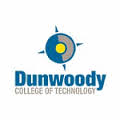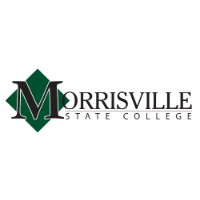What do they do?
Install, diagnose, or repair communications, sound, security, or navigation equipment in motor vehicles.
Also known as:
Auto Electrician (Automotive Electrician), Automotive Technician, Car Alarm Installer, Car Audio Installer, Car Electronics Installer, Car Stereo Installer, Electronic Equipment Installer, Electronic Technician, Installation Technician, Installer, Mobile Electronics Installation Specialist, Mobile Electronics Installer
-
-20%
Change
Ranks #25 in job growth rate30Job Openings
Ranks #8 in net job growth
Colleges with the most graduates that become Electronic Equipment Installers and Repairers, Motor Vehicles
-
University of Northwestern Ohio
Lima, OH
-
NASCAR Technical Institute
Mooresville, NC
-
Universal Technical Institute of California Inc
Rancho Cucamonga, CA
-
-
Universal Technical Institute-Bloomfield
Bloomfield, NJ
Looking for colleges that offer a specific major? Use the College Match Tool to find your best-matched schools and discover your estimated Net Price!
- Doctorate or Professional Degree (1%)
- Master's degree (1%)
- Bachelor's degree (9%)
- Associate's degree (21%)
- Some college, no degree (28%)
- High school diploma equivalent (32%)
- Less than high school diploma (8%)
People in this career often have these skills:
- Troubleshooting - Determining causes of operating errors and deciding what to do about it.
- Repairing - Repairing machines or systems using the needed tools.
- Critical Thinking - Using logic and reasoning to identify the strengths and weaknesses of alternative solutions, conclusions, or approaches to problems.
- Operations Monitoring - Watching gauges, dials, or other indicators to make sure a machine is working properly.
- Active Listening - Giving full attention to what other people are saying, taking time to understand the points being made, asking questions as appropriate, and not interrupting at inappropriate times.
People in this career often know a lot about:
- Mechanical - Knowledge of machines and tools, including their designs, uses, repair, and maintenance.
- Computers and Electronics - Knowledge of circuit boards, processors, chips, electronic equipment, and computer hardware and software, including applications and programming.
- Customer and Personal Service - Knowledge of principles and processes for providing customer and personal services. This includes customer needs assessment, meeting quality standards for services, and evaluation of customer satisfaction.
- Mathematics - Knowledge of arithmetic, algebra, geometry, calculus, statistics, and their applications.
- English Language - Knowledge of the structure and content of the English language including the meaning and spelling of words, rules of composition, and grammar.
People in this career often have talent in:
- Arm-Hand Steadiness - The ability to keep your hand and arm steady while moving your arm or while holding your arm and hand in one position.
- Finger Dexterity - The ability to make precisely coordinated movements of the fingers of one or both hands to grasp, manipulate, or assemble very small objects.
- Near Vision - The ability to see details at close range (within a few feet of the observer).
- Visual Color Discrimination - The ability to match or detect differences between colors, including shades of color and brightness.
- Problem Sensitivity - The ability to tell when something is wrong or is likely to go wrong. It does not involve solving the problem, only recognizing that there is a problem.
- Deductive Reasoning - The ability to apply general rules to specific problems to produce answers that make sense.
- Visualization - The ability to imagine how something will look after it is moved around or when its parts are moved or rearranged.
- Extent Flexibility - The ability to bend, stretch, twist, or reach with your body, arms, and/or legs.
- Oral Comprehension - The ability to listen to and understand information and ideas presented through spoken words and sentences.
- Inductive Reasoning - The ability to combine pieces of information to form general rules or conclusions (includes finding a relationship among seemingly unrelated events).
- Selective Attention - The ability to concentrate on a task over a period of time without being distracted.
- Manual Dexterity - The ability to quickly move your hand, your hand together with your arm, or your two hands to grasp, manipulate, or assemble objects.
- Oral Expression - The ability to communicate information and ideas in speaking so others will understand.
- Control Precision - The ability to quickly and repeatedly adjust the controls of a machine or a vehicle to exact positions.
People in this career often do these activities:
- Install audio or communications equipment.
- Inspect electrical or electronic systems for defects.
- Test electrical equipment or systems to ensure proper functioning.
- Drill holes in parts, equipment, or materials.
- Connect electrical components or equipment.
- Solder parts or connections between parts.
- Repair electronic equipment.
- Lay cables to connect equipment.
- Confer with customers or users to assess problems.
- Install insulation in equipment or structures.
- Install vehicle parts or accessories.
- Remove parts or components from vehicles.
- Document test results.
- Estimate costs for labor or materials.
- Clean equipment, parts, or tools to repair or maintain them in good working order.
- Repair electrical components.
- Fabricate parts or components.
This page includes data from:

 Occupation statistics: USDOL U.S. Bureau of Labor Statistics Occupational Employment Statistics
Occupation statistics: USDOL U.S. Bureau of Labor Statistics Occupational Employment Statistics
 Videos: CareerOneStop, USDOL/ETA and the Minnesota Department of Employment & Economic Development
Videos: CareerOneStop, USDOL/ETA and the Minnesota Department of Employment & Economic Development









